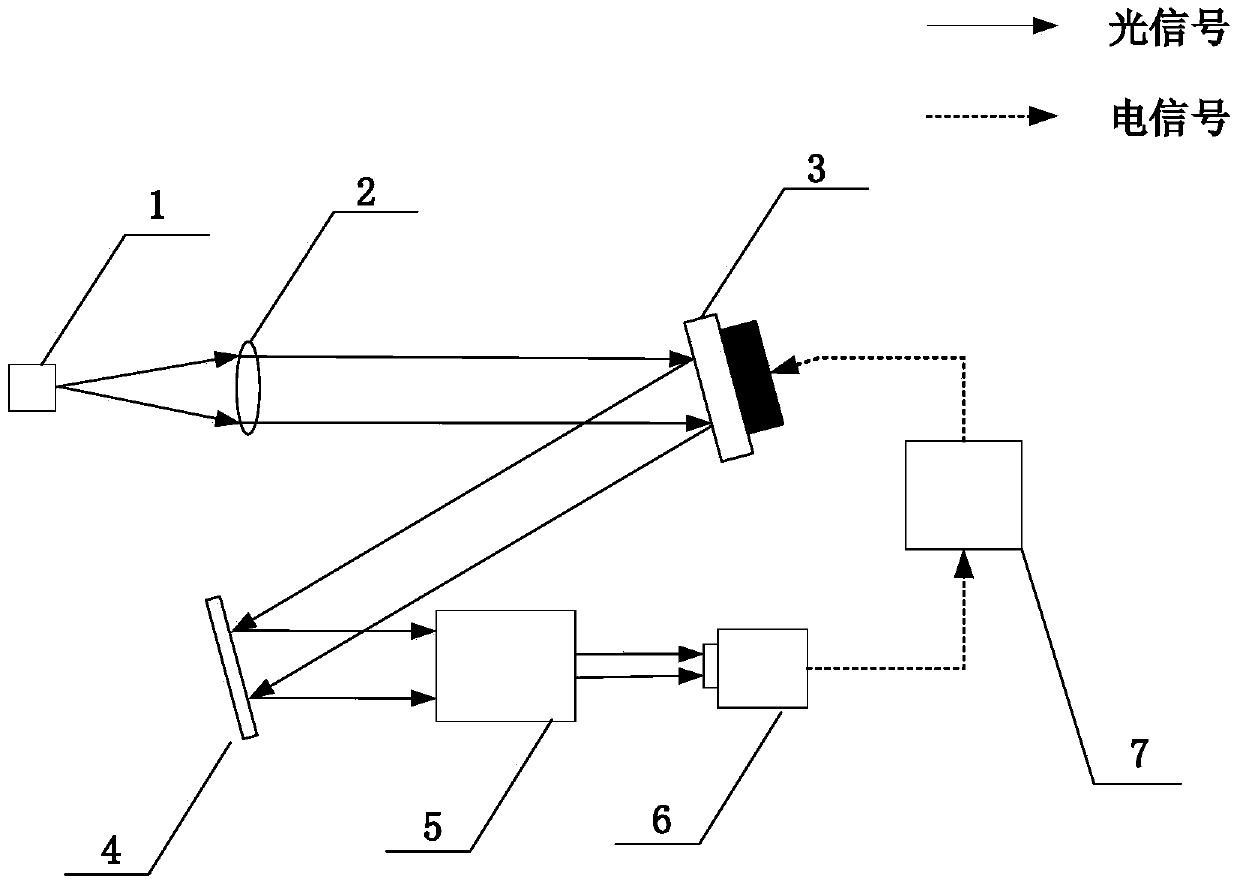A method for calculating the recovery voltage of complex wavefront sensing adaptive optics system
A technology of adaptive optics and wavefront restoration, applied in the field of adaptive optics, can solve problems such as underdetermined correction voltage, and achieve the effects of preventing high-order aberrations, improving stability, and improving closed-loop accuracy
- Summary
- Abstract
- Description
- Claims
- Application Information
AI Technical Summary
Problems solved by technology
Method used
Image
Examples
Embodiment Construction
[0020] The present invention will be further described below in conjunction with the accompanying drawings and specific embodiments.
[0021] A method for calculating the recovery voltage of a composite wavefront sensing adaptive optics system, when selecting a high-order wavefront sensor and a wavefront corrector to form a high-order adaptive optics system, using the direct slope wavefront restoration matrix R 0 Multiplied by the wavefront slope s measured by the higher order wavefront sensor 0 The restoration voltage v is obtained; when a low-order wavefront sensor and a wavefront corrector are selected to form a low-order adaptive optics system, the calculation of the restoration voltage v has the following steps:
[0022] Step (1), using the mode reconstruction matrix W of the low-order adaptive optics system 1 Multiplied by the wavefront slope error s measured by the low-order wavefront sensor 1 Get the wavefront error coefficient a 1 ;
[0023] Step (2), using the mo...
PUM
 Login to View More
Login to View More Abstract
Description
Claims
Application Information
 Login to View More
Login to View More - R&D
- Intellectual Property
- Life Sciences
- Materials
- Tech Scout
- Unparalleled Data Quality
- Higher Quality Content
- 60% Fewer Hallucinations
Browse by: Latest US Patents, China's latest patents, Technical Efficacy Thesaurus, Application Domain, Technology Topic, Popular Technical Reports.
© 2025 PatSnap. All rights reserved.Legal|Privacy policy|Modern Slavery Act Transparency Statement|Sitemap|About US| Contact US: help@patsnap.com



